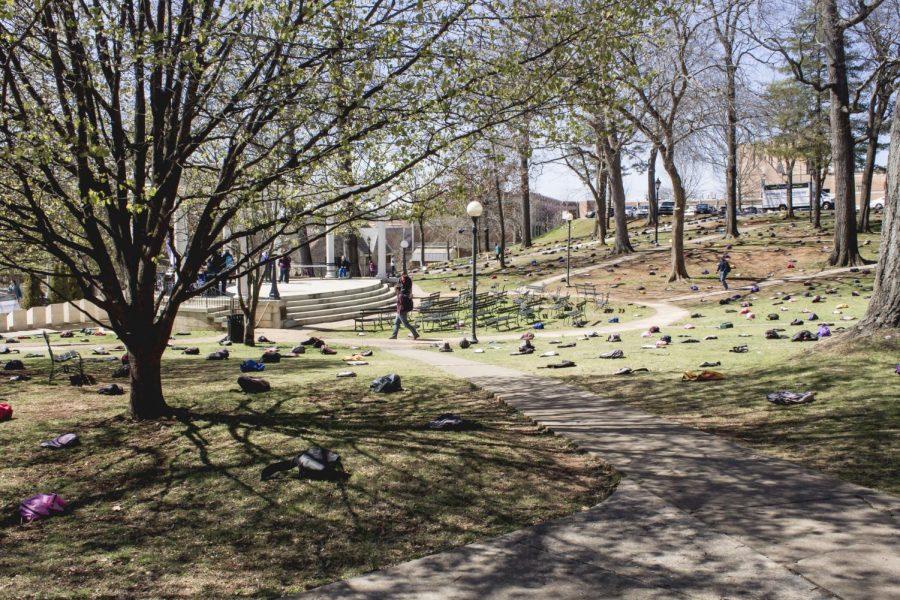Backpacks, stories represent student suicide on campuses
September 29, 2018
Send Silence Packing brings awareness to student suicide through displays of backpacks.
The exhibit features 1,100 backpacks that symbolize the number of college students who take their own lives each year in the United States.
Active Minds, an organization committed to educating the public about mental health and student suicide, tours the nation to display the exhibit on college campuses.
The inaugural display started in 2008 at the National Mall in Washington, DC. Send Silence Packing has reached approximately 946,710 visitors with messages of “hope and help,” according to activeminds.org
Send Silence Packing is designed to raise awareness about the incidence and impact of suicide. Suicide is the second leading cause of death among college students, according to suicide.org. The exhibition is also meant to help connect students to mental health resources and inspire action for suicide prevention.
Local communities donate backpacks in memory of loved ones who have died by suicide. Friends and family provide personal testimonies with the backpacks of their experiences and memories with each student who completed suicide. Some backpacks still contain the students’ books and notes.
Displaying backpacks with personal stories allows for people to put a face to lives lost to suicide, according to activeminds.org.
Mazie Snider, vice president of UNA’s Active Minds, said mental health is a subject more people should have a conversation about.
She said Active Minds would like to bring Send Silence Packing back sometime in the near future.
“We’ve been in contact with Jesse Harbuck, student welfare chair, in hopes of partnering with the SGA Welfare Committee to bring Send Silence Packing to campus in the Spring,” Snider said.
The last time UNA hosted the event was February 2017.
“Personally, I don’t know anyone who struggles with mental health,” said freshman Gray Overton. “I think that mental health is a legitimate topic that’s important for students to talk about, though.”
Student suicide is a topic other organizations are trying to bring more awareness too. The suicide rate among young adults ages 15 to 24 has tripled since the 1950s. Women attempt suicide three times more often than men, but men actually commit suicide four times more often than women, according to an article on collegedegreesearch.net
“Even for people who don’t struggle with suicidal thoughts, they should actively become a safe place for those who are thinking about it,” said junior McCall Harwell.
Students struggling with their mental health or suicidal thoughts can call the suicide prevention hotline at 1-800-273-8255.












